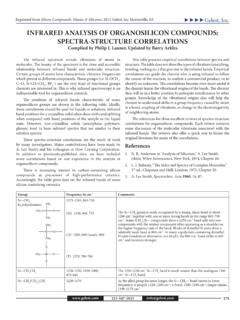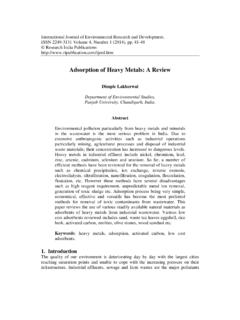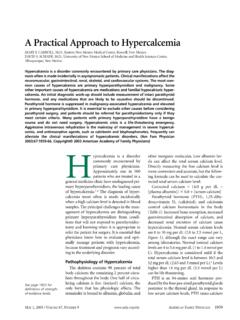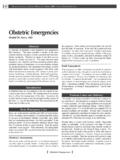Transcription of Silane Coupling Agents - Gelest, Inc.
1 Silane Coupling AgentsConnecting Across BoundariesMetal PrimersBind BiomaterialsProvide CrosslinkingImmobilize CatalystsImprove Polymer and Particle DispersionEnhance Adhesive BondingIncrease Electrical PropertiesMaximize Composite StrengthIncrease Mechanical PropertiesVersion3 .0:Water-borne SilanesNew Coupling Agents :Cyclic Aza-Silanes, Azido-Silanes, Dipodal Silanes Oligomeric HydrolysatesIn Mainland China:For commercial and research quantities contact:A Meryer Chemical Technology Shanghai CompanyNo. 3636, Jiangcheng RoadShanghai, China 200245 Tel: +86-(0)-21-61259170 Fax: +86-(0)-21-61259169 Email: Japan:For commercial and research quantities contact:Matsuda Yaesudori, Bldg F81-10-7 Hatchoubori, Chou-KuTokyo 104-0032 Tel: 81-3-5543-1630 Fax: 81-3-5543-0312 Email: catalog: India:For commercial and research quantities contact:Gautavik International301, A Wing Chandan Co-op Hsg Cross Road NorthVile Parle West, Mumbai 400056 IndiaTel: 91-22-26703175 Fax: 91-96-19190510 Email: South-East Asia:For commercial and research quantities contact:Gulf Chemical39 Jalan PemimpinTai Lee Industrial Building #04-03 Singapore 577182 Tel: 65-6358-3185 Fax: 65-6353-2542 Email: Taiwan:For commercial and bulk quantities contact:Kelly Chemical Corporation9F, , , Keelung Rd, TaipeiTaiwanTel : +886-2-27621985 Fax.
2 +886-2-27532400 Website: http://www. : further information consult our web site at: , : General 215-547-1015 Order Entry 888-734-8344 Technical Service: 215-547-1016 FAX: 215-547-2484 Internet: : 11 East Steel , PA 19067 Copyright 2014, Gelest Product LinesSilicon Compounds: Silanes & Silicones608 page handbook of Silane and silicone chemistry includes scholarly reviews as well as detailed application for Material & Polymer TechnologyA reference manual for optical and electronic and nanotechnology applications. applications of silicon, germanium, aluminum, gallium, copper and other metal chemistries. Deposition techniques include ALD, CVD, spin coating and self-assembled monolayers (SAMs). Presents chemistry and physics in the context of device applications ranging from ULSI semiconductors to DNA array devices Reactive Silicones Forging New Polymer Linkscoatings, membranes, cured rubbers and adhesives for mechanical, optical, silicones as well as physical property shortens product development time for chemists and Fluids Stable, Inert Mediaavailable in viscosities ranging from to 2,500,000 description of non-functional silanes that are used to prepare hydrophobic and water repellent surfaces, as well as polar and hydroxylic silanes used to prepare wettable of ConTenTsWhat is a Silane Coupling Agent.
3 2 How Does a Silane Coupling Agent Work ..3 Selecting a Silane Coupling Agent - Inorganic Substrate Perspective ..4 Selecting a Silane Coupling Agent - Interphase Considerations ..5 Partition, Orientation and Self-Assembly in Bonded Phases ..6 Selecting a Silane Coupling Agent - Polymer Applications ..7special Topics:Linker Length ..11 Dipodal Silanes ..12 Cyclic Azasilanes ..14 Thermal Stability of Silanes ..16 Aqueous Systems & Water-Borne Silanes ..17 Masked Silanes - Latent Functionality ..18 Coupling Agents for Metal Substrates ..19 Difficult Substrates ..20 Applying a Silane Coupling Agent ..21 Silane Coupling Agents for Polymers - Selection Chart ..24 Silane Coupling Agents for Biomaterials - Selection Chart ..27 Silane Coupling Agents - Properties ..28UV Active and Fluorescent Silanes ..65 Chiral Silanes and Biomolecular Probes.
4 67 Silyl Hydrides and Trihydridosilanes ..69 Dipodal Silanes - Non-Functional ..70 Organosilane Modified Silica Nanoparticles ..71 Further Information - Other Resources ..72silane Coupling agentsConnecting Across BoundariesSilane Coupling Agents : Connecting Across Boundaries (3rd Edition) by Barry Arkles with selected updates by Annalese Maddox, Mani Singh, Joel Zazyczny, and Janis Matisons Copyright 2014 Gelest, Inc. Morrisville, PA2 Please visit us at www .gelest .comSubstrateSurfaceSubstrateSurfaceR(CH 2)nSiOHOHOHHO SiOHOOSiOPolymerOSiOHOOSiOOHOHSi(CH2)nRR PolymerR si lane Coupling agentsSilane Coupling Agents have the ability to form a durable bond between organic and inorganic materials . Encounters between dissimilar materials often involve at least one member that s siliceous or has surface chemistry with siliceous properties; silicates, aluminates, borates, etc.
5 , are the principal components of the earth s crust . Interfaces involving such materials have become a dynamic area of chemistry in which surfaces have been modified in order to generate desired heterogeneous environments or to incorporate the bulk properties of different phases into a uniform composite structure . The general formula for a Silane Coupling agent typically shows the two classes of functionality . X is a hydrolyzable group typically alkoxy, acyloxy, halogen or amine . Following hydrolysis, a reactive silanol group is formed, which can condense with other silanol groups, for example, those on the surface of siliceous fillers, to form siloxane linkages . Stable condensation products are also formed with other oxides such as those of aluminum, zirconium, tin, titanium, and nickel.
6 Less stable bonds are formed with oxides of boron, iron, and carbon . Alkali metal oxides and carbonates do not form stable bonds with Si-O- . The R group is a nonhydrolyzable organic radical that may posses a functionality that imparts desired characteristics .The final result of reacting an organosilane with a substrate ranges from altering the wetting or adhesion characteristics of the substrate, utilizing the substrate to catalyze chemical transformations at the heterogeneous interface, ordering the interfacial region, and modifying its partition characteristics . Significantly, it includes the ability to effect a covalent bond between organic and inorganic materials .R-(CH2)n Si X3 Organofunctional Group LinkerSilicon atomHydrolyzableGroupsTrialkoxysilane(CH 2)nRSiXXXM onoalkoxysilane(CH2)nRSiXCH3H3 CEnabling Your TechnologyContact us today!
7 215-547-1015 Does a Silane Modify a surface?Most of the widely used organosilanes have one organic substituent and three hydrolyzable substituents . In the vast majority of surface treatment applications, the alkoxy groups of the trialkoxysilanes are hydrolyzed to form silanol-containing species . Reaction of these silanes involves four steps . Initially, hydrolysis of the three labile groups occurs . Condensation to oligomers follows . The oligomers then hydrogen bond with OH groups of the substrate . Finally, during drying or curing, a covalent linkage is formed with the substrate with concomitant loss of water . Although described sequentially, these reactions can occur simultaneously after the initial hydrolysis step . At the interface, there is usually only one bond from each silicon of the organosilane to the substrate surface.
8 The two remaining silanol groups are present either in condensed or free form . The R group remains available for covalent reaction or physical interaction with other phases . Silanes can modify surfaces under anhydrous conditions consistent with monolayer and vapor phase deposition requirements . Extended reaction times (4-12 hours) at elevated temperatures (50 -120 C) are typical . Of the alkoxysilanes, only methoxysilanes are effective without catalysis for vapor deposition . The most effective silanes for vapor phase deposition are cyclic azasilanes . Hydrolysis Considerations Water for hydrolysis may come from several sources . It may be added, it may be present on the substrate surface, or it may come from the atmosphere . The degree of polymerization of the Silane is determined by the amount of water available and the organic substituent.
9 If the Silane is added to water and has low solubility, a high degree of polymerization is favored . Multiple organic substitution, particularly if phenyl or tertiary butyl groups are involved, favors formation of stable monomeric silanols . The thickness of a polysiloxane layer is also determined by the concentration of the siloxane solution . Although a monolayer is generally desired, multilayer adsorption results from solutions customarily used . It has been calculated that deposition from a 0 .25% Silane solution onto glass could result in three to eight molecular layers . These multilayers could be either inter-connected through a loose network structure, or intermixed, or both, and are, in fact, formed by most deposition techniques . The orientation of functional groups is generally horizontal, but not necessarily planar, on the surface of the substrate.
10 The formation of covalent bonds to the surface proceeds with a certain amount of reversibility . As water is removed, generally by heating to 120 C for 30 to 90 minutes or evacuation for 2 to 6 hours, bonds may form, break, and reform to relieve internal stress . The same mechanism can permit a positional displacement of interface components .Hydrolytic Deposition of silanesanhydrous Deposition of silanesB. Arkles, CHEMTECH, 7, 766, 1977 - CH3 OHSiH3 COCH3CH3R+OSiCH3H3 CROH4 Please visit us at www .gelest .comselecting a Silane for surface ModificationInorganic substrate PerspectiveFactors influencing Silane surface modification selection include: Concentration of surface hydroxyl groups Type of surface hydroxyl groups Hydrolytic Stability of the bond formed Physical dimensions of the substrate or substrate featuresSurface modification is maximized when silanes react with the substrate surface and present the maximum number of accessible sites with appropriate surface energies.







